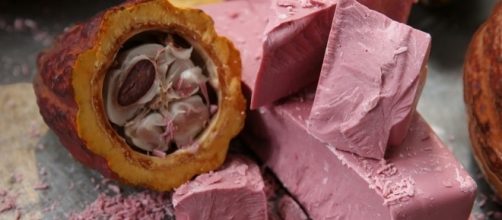Thanks to the latest invention by Swiss scientists, the delightful world of Chocolate has now expanded beyond the conventional hues of milk, dark and white.
The fourth flavour of chocolate-dom
#RubyChocolate satisfies a new consumer need found among #Millennials - an intense sensorial delight: https://t.co/GaAtGW92aH #Innovation pic.twitter.com/83Gzxdm66D
— Barry Callebaut (@BCgroupnews) September 5, 2017
Barry Callebaut, one of the world’s largest cocoa producers, debuted the new rose-hued chocolate at a special event in Shanghai on September 5, 2017.
"It’s natural, it’s colourful, it’s hedonistic, there’s an indulgence aspect to it, but it keeps the authenticity of chocolate," the company’s CEO, Antoine de Saint-Affrique, told Bloomberg. "It has a nice balance that speaks a lot to millennials," he added.
Known as the ‘ruby chocolate’, the fruity confection is the first natural coloured chocolate since white chocolate came onto the scene more than 80 years ago. Nestlé launched the world’s first white chocolate bar in Europe in the 1930s.
The rosy confection has no additives
The ruby chocolate has a unique taste which the Zurich-based chocolatier described as “a tension between berry fruitiness and luscious smoothness", in a press release. The Swiss firm revealed that the PINK confection is made from Ruby cocoa bean that typically grows in countries like Ecuador and Brazil.
According to Barry Callebaut, the firm spent 13 years in developing ruby chocolate. “Innovations in chocolate often take years because of the complex structures and the challenge of maintaining texture and taste", Bloomberg reported.
While other companies have been successful at creating red cocoa powder in recent years, this is the first time a "natural reddish chocolate" has been invented, noted Barry Callebaut in a TODAY report. The company confirmed that no berries or colouring are added to the new chocolate.
However, chocoholics across the world will have to wait a while longer before they can indulge in the fruity goodness as the chocolate won’t be available to consumers until six to 18 months from now.
The retail price and countries where it’ll be sold are yet to be disclosed.
In the past few years, the global market is witnessing a steep decline in chocolate-making jobs. Earlier this year, Hershey axed 15% of its global workforce as part of a major restructuring. Similarly, last month, Cadbury trimmed its workforce by more than 10% as part of a £57 (approx.) million upgrade. "The decline reflects two broader trends playing out in the manufacturing industry: Technology is eliminating jobs and producers have shifted some work overseas," explained an Economy article. At such a time, ruby chocolate has increased the possibility that the rosier days may return.


